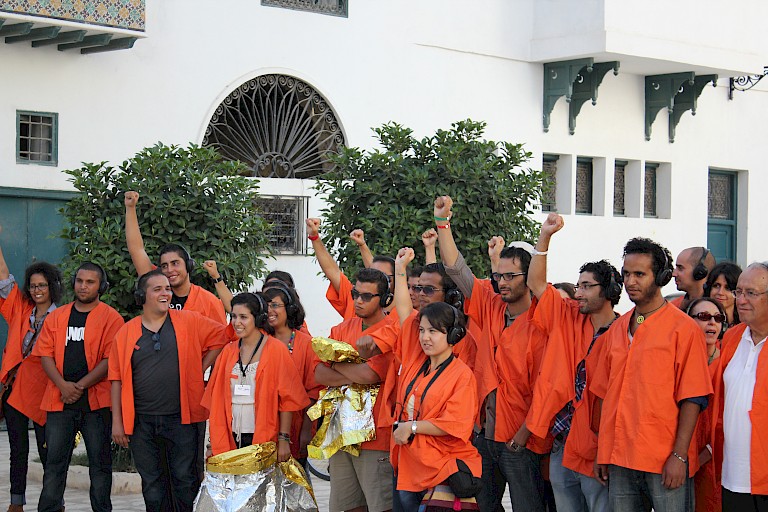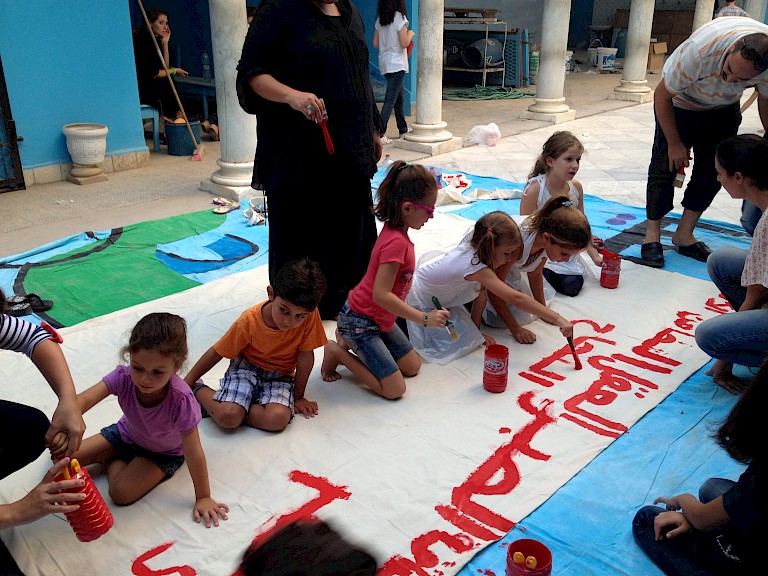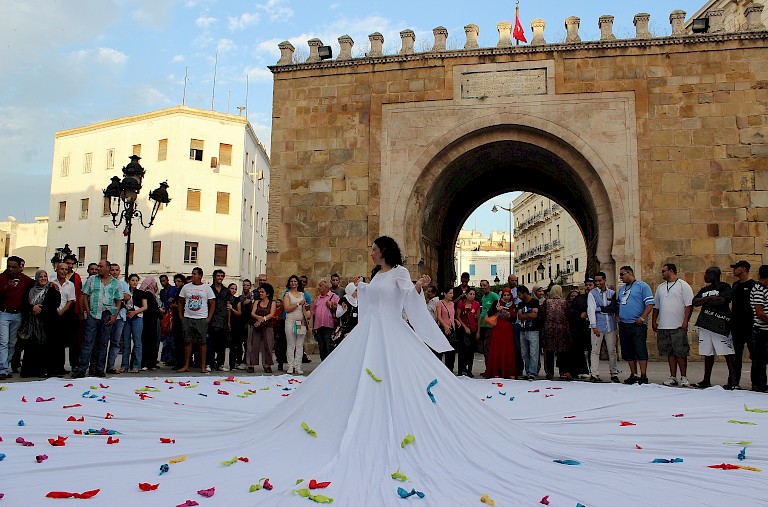



Roger Bernat’s Public Domain was an outstanding example of participatory public art in Dream City. Audiences registered beforehand to secure a place and turned up at an appointed time on Tribunal Street where they were given a choice to exchange a personal item of value for a pair of headphones. After this initial transaction, participants navigated the public space in response to questions from a narrator speaking through the headphones. For example, in response to a question about place of birth, audiences divided themselves up by going right or left, depending on whether they were Tunisian or foreign. Public Domain used questions as action triggers, thereby setting the stage for a participatory social choreography. Audiences found themselves acting/experimenting with different roles—as protesters, medical staff, and security forces—through the inclusion of costume props. They were also provoked to reflect on how human bodies and histories coincided with social and spatial divisions.
Raeda Saadeh’s Tree of Wishes had a similar participatory dimension. In this performance audiences were confronted with an arresting visual spectacle, a female character in a seemingly unending white dress (60-meters in diameter), attended by other women who gave out colored handkerchiefs and markers. Audiences were invited to write down their wishes and then to tie the handkerchiefs into knots to throw onto the white dress. According to the artist, the performance was intended as a re-imagination of the role of women in the region. The powerful, central, female character presumably contrasted sharply with gendered norms.
Given the theme Artists Facing Freedom, it is unsurprising that the artistic directors conceived of the programming in political terms. The regional context was, of course, highly salient, Tunisia being the place where Mohamed Bouazizi set himself alight in desperation in 2010, literally igniting the so-called Arab Spring. Works like Bernat’s and Saadeh’s, and many of the other pieces in the biennial, seemed to create intimate encounters in public spaces in Tunis and Sfax. Video documentary footage provides evidence of enthusiastic audiences taking part in Dream City, and of the biennial temporarily transforming the ancient Medinas of Tunis and Sfax.
If we conceive of the biennial’s political message as a claim about the right of citizens and residents to publics that afford solidarity, rather than the kind of alienation that contributed to Bouazizi’s self-immolation, the emergence of public intimacy may be taken as reasonable measure of the consequentiality of political claims making. The kinds of intimate encounters facilitated by various artistic interventions in the public spaces of the two medinas would not have been possible without a reliable atmosphere of trust. It is this quality of trust that similarly founds the possibility of solidarity between different individuals and constituencies in the future Tunisia.
All copyright belongs to Shanghai Academy of Fine Arts, Shanghai University.



